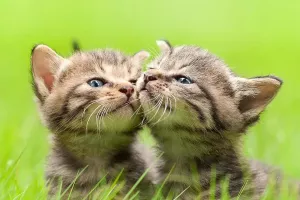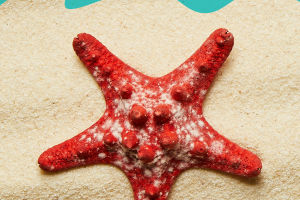The animals of the cattle family are stout, and both males and females have horns. Most are very large herbivores. These include African and American bison, water buffalo and yak, which are very important to humans.
Their overall physique is strong and not good at running.
Their morphological characteristics.
The cattle are 1.5 to 2.5 meters long and weigh 200 to 350 kilograms. They are of strong build, with large heads, broad foreheads, broad noses, large mouths, and large eyes. There are 2 large nostrils on the upper part of the upper lip, and the skin between them is firm, smooth, and hairless.
There are a pair of horns behind the ears on the head, separated from left to right. The length and size of the horns vary by breed.
The limbs are well-proportioned, all four toes have hoof nails, and the last two toes do not touch the ground, which is called hanging hoof. The tail is long and has a tuft of hair at the end, mostly yellow, but also black, variegated, reddish-brown and white.
Habitat.
Cattle are highly adaptable and adapt well to the local climate. Its suitable living temperature is 15-25°C.
Habitat varies by species. It can survive in savannahs, savannas, wetlands, tropical rain forests and temperate forests.
Distribution range of cattle.
Cattle are distributed all over the world.
In addition to harsh environments such as extreme cold and extreme drought, data from the Food and Agriculture Organization of the United Nations in 2019 shows that Brazil is the most common country for cattle, with 215 million head of cattle, and India has about 1.93 million head of cattle.
Cattle are obligate herbivores, and these animals tend to live in groups and forage in open grassland habitats.
As complete herbivores, large bovine animals consume high-fiber vegetation, which contains more cellulose and lignin than forest animals.
1. It likes to eat a lot of grass.
For example, ryegrass, clover, etc., if you want the cattle to grow better, you can mix some feed during the feeding period, so that the nutrition will be more comprehensive and the growth rate will be faster.
2. The grass that is very suitable for cattle is the imperial bamboo grass.
The appearance of the imperial bamboo grass is very similar to sugar cane and reed, and it will raise 20-30 knots during the growth period.
The plants on the upper part of the imperial bamboo grass are tall and sturdy, the internodes are crisp and tender, the nodes are small, the stem height is about 3-4 meters, and the plant height can reach more than 5 meters.
3. Ryegrass is also great for raising cattle.
It is divided into annual and perennial. It likes warm and humid climates.
It is suitable for growing in places with cool summers and not too cold winters. Generally, it can grow well at about 10°C, suitable for growth below 27°C, and will not grow well at 35°C.
Cattle species with limited ranges and unique habitat requirements are at greater risk. They are in a dire situation in their future survival.


